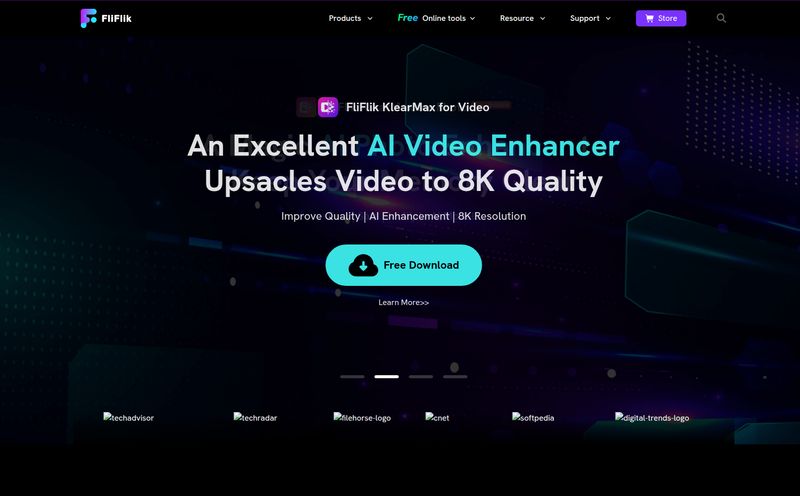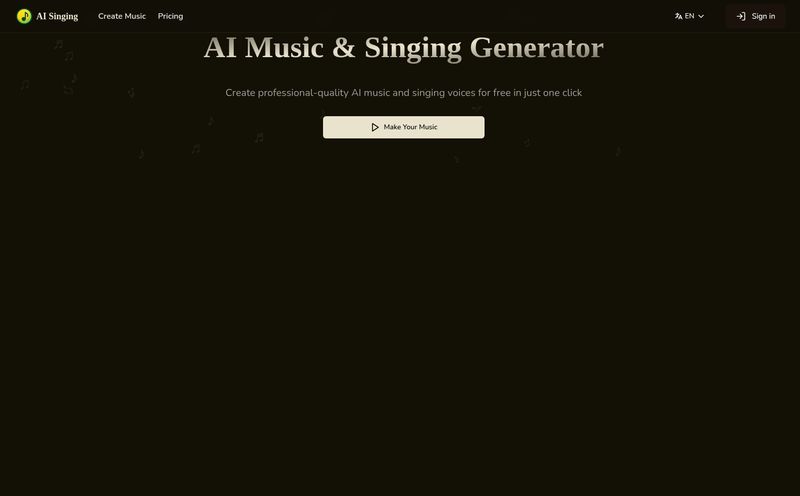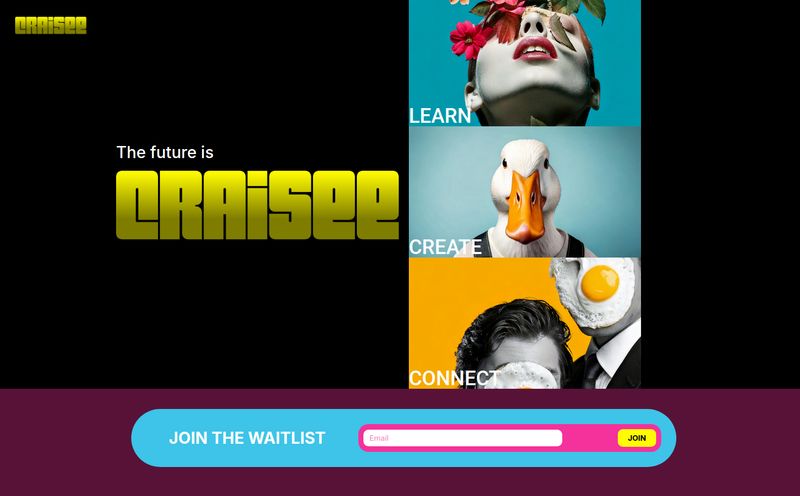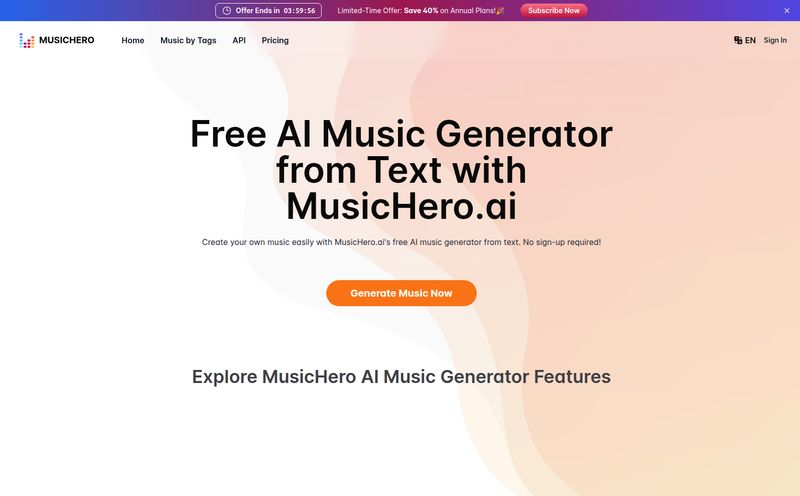If you’re a content creator, you know the pain. The endless, soul-crushing scroll through royalty-free music libraries. You’re looking for that perfect background track for your YouTube video, that slick intro for your podcast, or just a little something for a Reel. But everything sounds… the same. Corporate. Lifeless. You either pay a fortune for a decent track or settle for something that has all the personality of a beige wall.
I've been there. Wasted hours. We all have.
Then along came the AI music revolution. Suddenly, platforms were popping up, promising to spin up custom tunes from a simple text prompt. The early days were a bit rough, think robotic MIDI files. But the tech has been getting scarily good, scarily fast. And in this crowded space, a name we all know from the AI art world, Stability AI, has dropped its own contender: Stable Audio. The question is, is it just another tech demo, or is it a genuinely useful tool for those of us in the trenches creating content every day?
First Impressions: What Exactly Is Stable Audio?
So, what’s the pitch? At its heart, Stable Audio is a generative AI platform designed to create music and sound effects. It’s built on the idea of turning your text ideas into high-quality audio. But it’s not just a one-trick pony. It handles two main functions: text-to-audio and audio-to-audio generation.
- Text-to-Audio: This is what most people think of. You type in a description—something like, “Chill lo-fi beats, rainy afternoon, good for studying”—and it generates a track for you.
- Audio-to-Audio: This is where things get interesting. You can upload an existing audio file, and Stable Audio uses it as inspiration, transforming it into something new. It’s like giving the AI a sonic mood board to work from. Really powerful stuff.
The first thing I noticed logging in was the interface. It's clean. Almost minimalist. There’s no clutter, no confusing menus. Just a prompt box, a duration slider, and a big button that says “Try prompt”. They’re clearly leaning into the “AI music by musicians, for musicians” angle, making the tech feel accessible rather than intimidating. For someone who spends their days bouncing between a dozen different SaaS platforms, this simplicity is a breath of fresh air.
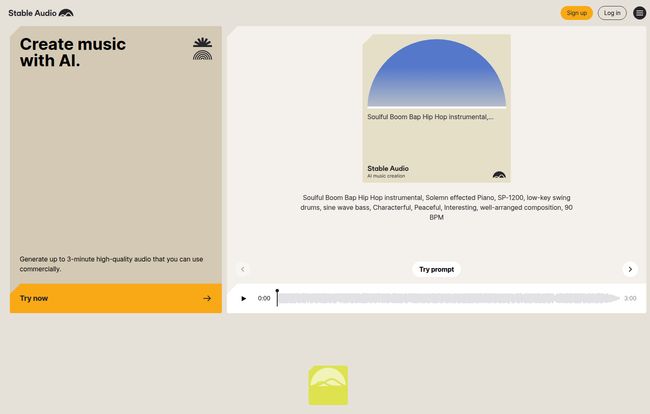
Visit Stable Audio
The Sound of AI: Putting Stable Audio to the Test
Alright, let’s get to the fun part. Making some noise. I decided to try a prompt similar to the one in their demo: “Soulful Boom Bap Hip Hop, instrumental, vinyl crackle, warm bass line, mellow electric piano, 90 BPM.”
I hit the button, and a few seconds later, I had a couple of options. And you know what? They were good. Genuinely good. The quality is a crisp 44.1 kHz stereo, which is basically CD quality. This isn't some muffled, low-bitrate sound. It’s clean enough to layer under dialogue in a video or even use as a standalone instrumental. The vinyl crackle was there, the bass had a nice presence... it understood the assignment.
The audio-to-audio feature is the real secret weapon, in my opinion. I uploaded a short, simple acoustic guitar melody I had recorded on my phone. I gave it the prompt “transform into an ambient, cinematic soundscape with ethereal pads.” The result was fascinating. It kept the core melodic structure but built an entirely new arrangement around it. This is a massive leap from just typing in words; it allows for a level of creative direction that feels more like collaboration than generation. It's like having a studio assistant who never gets tired of your weird ideas.
Let's Talk About The Elephant in the Room: Licensing and Commercial Use
Okay, so you’ve generated a banger track. It’s perfect for your next project. Can you actually use it? This is the single most important question, and it’s where many AI tools get confusing. I’ve got to give props to Stability AI here; their licensing is refreshingly clear.
They break it down into three main types:
- Personal License: This comes with the free plan. You can use the audio for personal, non-commercial projects. Think listening for yourself or sharing with friends. You can’t use it in a monetized YouTube video or a product.
- Creator License: This is for the rest of us. It comes with their paid plans (Pro, Studio, Max) and allows for commerical use in things like social media posts, podcasts, videos, and even indie games. There are some reasonable limits, like it covers you for channels with under 100,000 monthly active users, which is most independent creators.
- Enterprise License: For the big guns. If you’re a Fortune 500 company or making a major film, you’ll need to talk to them for a custom license.
This clarity is fantastic. There's no gray area. If you're making money with your content, you need a paid plan. Simple as that. It protects you, and it ensures the platform can continue to be developed. It’s a fair trade.
The All-Important Question: How Much Does Stable Audio Cost?
So, what’s the damage to your wallet? The pricing structure is pretty straightforward and caters to different levels of need. I’ve always felt that tiered pricing is the way to go for creative tools, and Stable Audio nails it.
| Plan | Price | Monthly Track Generations | License |
|---|---|---|---|
| Free | $0 | 10 | Personal |
| Pro | $11.99/month | 250 | Creator |
| Studio | $29.99/month | 675 | Creator |
| Max | $89.99/month | 2,250 | Creator |
The Free plan is a perfect sandbox. 10 generations is enough to see if you like the tool's output before committing. The Pro plan, at about twelve bucks a month, feels like the sweet spot for most YouTubers, podcasters, and social media managers. 250 tracks is a lot of background music. The higher tiers are for power users—maybe small agencies or creators who produce a massive volume of content.
The Good, The Bad, and The AI-Generated
No tool is perfect, right? After spending a good amount of time with it, here’s my honest breakdown.
What I Really Like About Stable Audio
The audio quality is genuinely top-tier for this space. It doesn't sound like a cheap synth; it has texture and depth. The user interface is a joy to use—it gets out of your way and lets you create. But for me, the combination of the audio-to-audio feature and the super-clear Creator License is the winning formula. It gives you both creative control and peace of mind, which is a rare combo.
Where It Could Be Better
The limits on track generations, while generous on the paid plans, are still something to be mindful of. If you're someone who likes to iterate a hundred times, you might feel the cap. The biggest limitation for me, though, is the 3-minute track duration. For a YouTube background track, that’s usually fine. But if you were hoping to generate a full song or a longer ambient piece for a meditation video, you'd have to generate multiple parts and stitch them together. It's a solvable problem, but not a seamless one. And of course, the free plan's license is restrictive, but that's the nature of a freemium model.
Who is Stable Audio Actually For?
So, who should be running to sign up? In my experience, Stable Audio is a near-perfect fit for a few key groups:
- Podcasters: Need unique, brand-aligned intro, outro, and transition music? This is your tool.
- YouTubers & Video Creators: Stop using the same three songs from the YouTube Audio Library that everyone else uses. Generate something that fits the exact mood of your video.
- Social Media Managers: Churning out dozens of TikToks, Reels, and Shorts? A subscription here is cheaper and more versatile than most commercial music libraries.
- Indie Game Developers: Perfect for generating sound effects (e.g., “laser blast,” “footsteps on gravel”) and ambient background loops on a budget.
Is this going to replace a professional composer working on a film score? Not yet. But as a tool for ideation or for creators who need high-quality, custom audio without the high-end budget? It’s a bit of a revolution.
Ultimately, the era of bland, generic stock music might just be ending. Tools like Stable Audio aren't just generating music; they're generating possibilities. They’re giving individual creators the kind of custom resources that used to be reserved for big studios. And while the technology is still young, it's already proven itself to be more than just a novelty. It's a workhorse.
So, should you try it? Absolutely. The free tier costs you nothing but a few minutes of your time. Go mess around with it. See if it sparks an idea. For me, it’s already earned a permanent spot in my creator toolkit. It’s not just a time-saver; it’s a creativity-enhancer. And in this business, that’s worth its weight in gold.
Frequently Asked Questions about Stable Audio
- Can I use music from Stable Audio on my monetized YouTube channel?
- Yes, you can, but you'll need one of the paid plans (Pro, Studio, or Max) which includes the Creator License for commercial use.
- Is Stable Audio completely free to use?
- There is a generous free tier that gives you 10 track generations per month. However, this is for personal, non-commercial use only. For commercial projects, a paid subscription is required.
- What is the maximum length of a track I can create?
- Currently, all plans, including the free tier, allow you to generate tracks up to 3 minutes long.
- What exactly is the audio-to-audio feature?
- It's a feature that allows you to upload your own audio sample (like a melody or a drum beat). The AI then uses your upload as a stylistic and structural guide to generate a completely new piece of audio.
- What happens to my music if I cancel my subscription?
- Based on standard industry practice, any music you generated while you had an active Creator License should still be covered for the projects you used it in. However, you wouldn’t be able to generate new commercial tracks. It's always a good idea to check the latest Terms of Service on their website for the most accurate details.
Reference and Sources
- Stable Audio Official Website
- Stable Audio Pricing Page
- Stability AI Homepage
- Suno AI (A notable alternative in the space)
